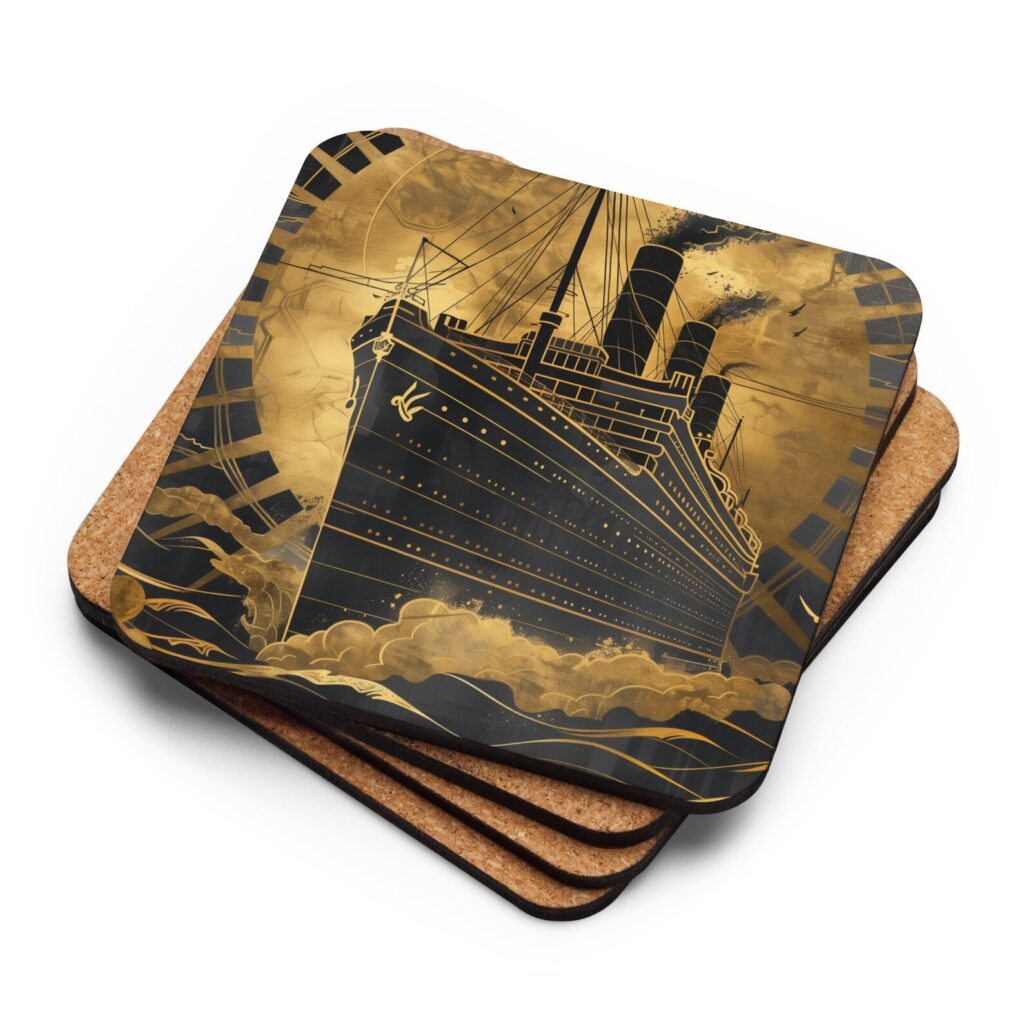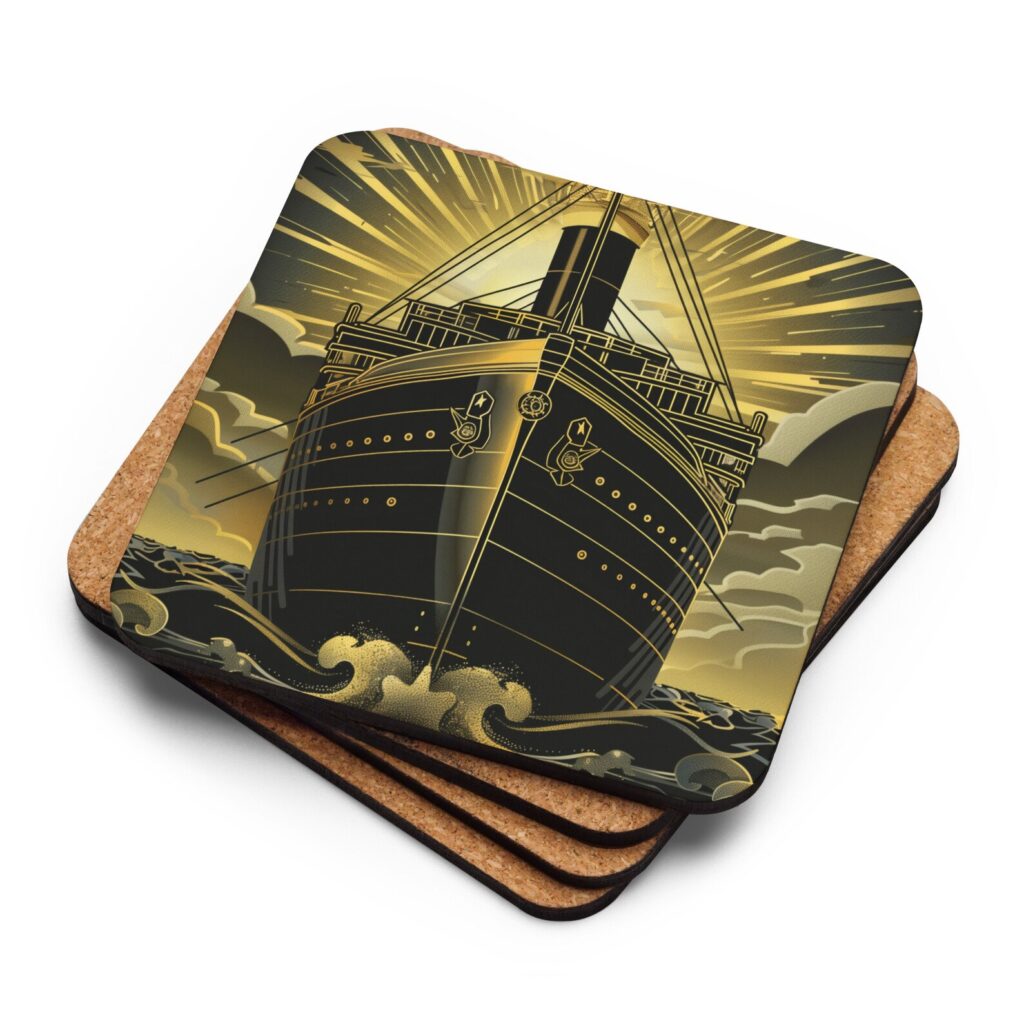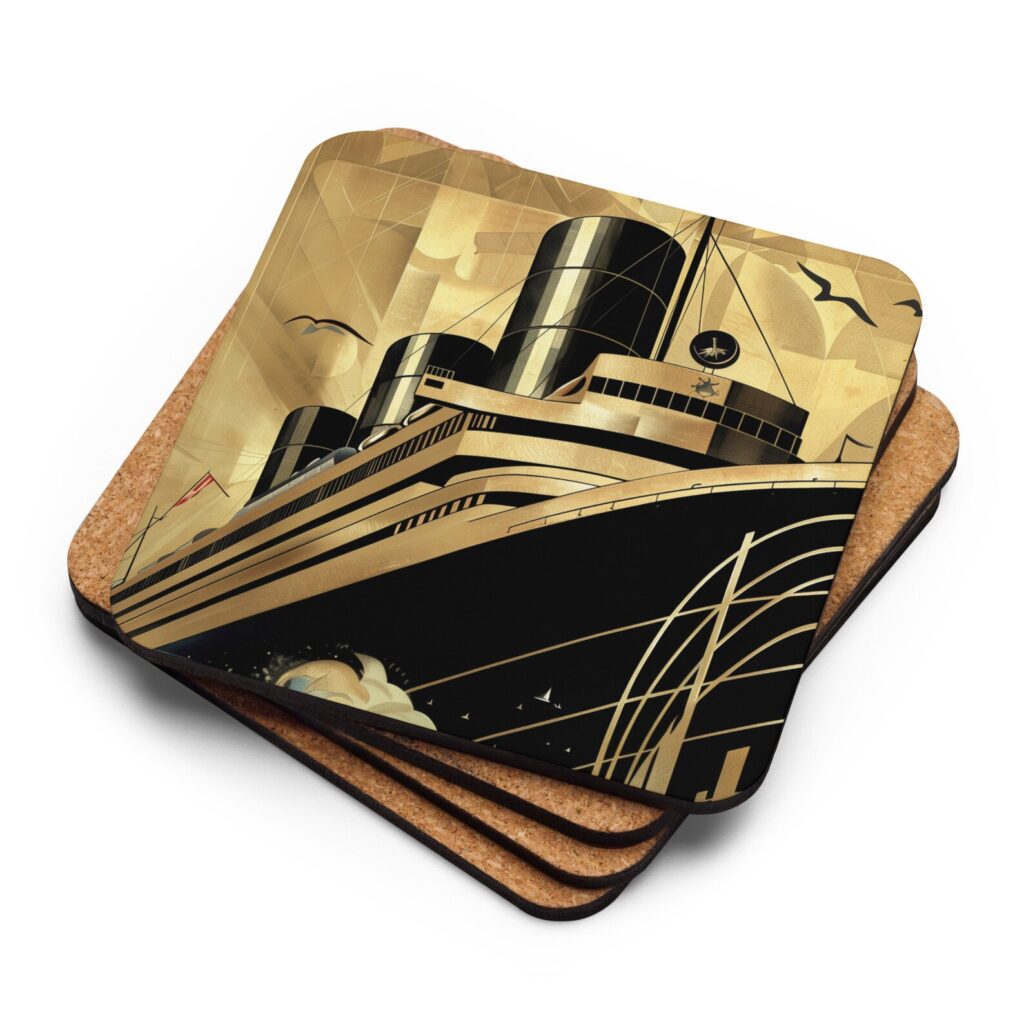Having a Dutch uncle has its privileges, and I am not only referring to the generous portion of premium Gouda and wry humor on my visits. Once in a while, I also get exclusive access to his collection of vintage shipping books and magazines! The jewel in the crown is a booklet dedicated to the much-loved and mourned ocean liner Willem Ruys.
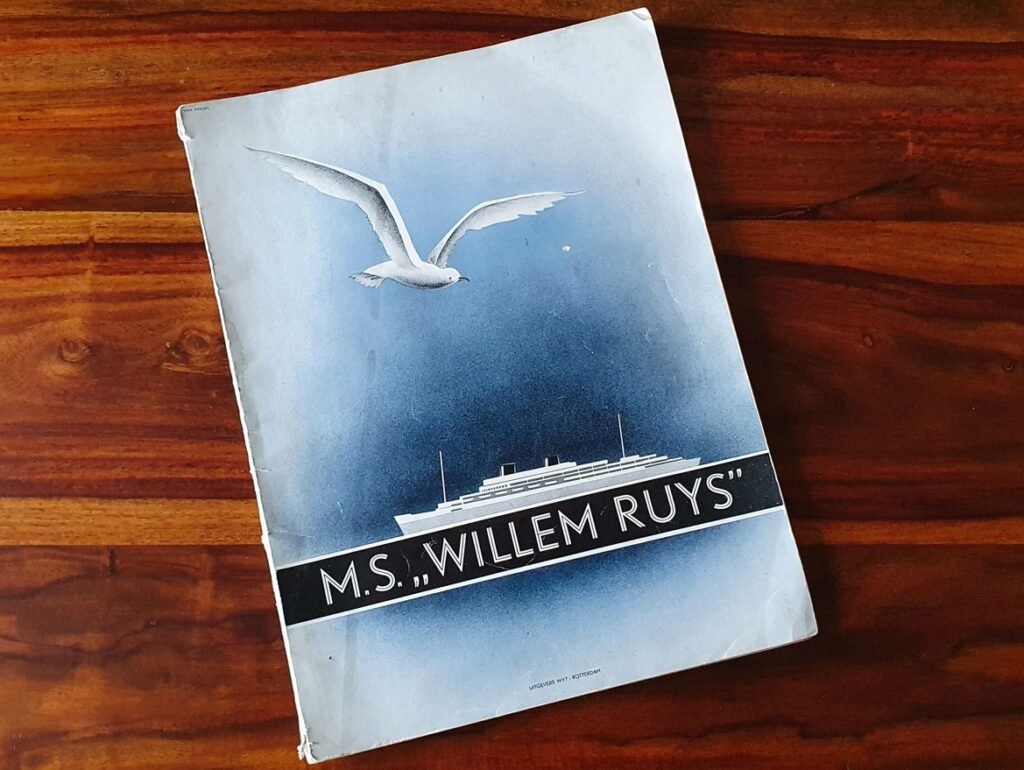
A late child of a grand maritime age, she was born into wealth and christened in the turbulent waves of a new global order. Her dazzling and haunted career began like an epic, exploded into a Cold-War spy thriller, and ended in bitter tragedy.
A Troubled Childhood
1939 was a bad year to build a luxury liner. With the outbreak of war in Europe, bombs rained from the Dutch skies, suspending all work at the KMS dockyard in Vlissingen and damaging the unfinished hull of one special vessel. It was the Koninklijke Rotterdamsche Lloyd’s newly commissioned flagship for the East Indies Route to Batavia. When German forces occupied the Netherlands in 1940, they attempted to resume construction of the liner, but the persistent Dutch resistance sabotaged the effort. With the shattering of Nazi imperial ambitions in 1945, work continued on the new flagship despite the damage, as the KRL urgently needed a competitive edge against the Netherland Line’s MS Oranje.
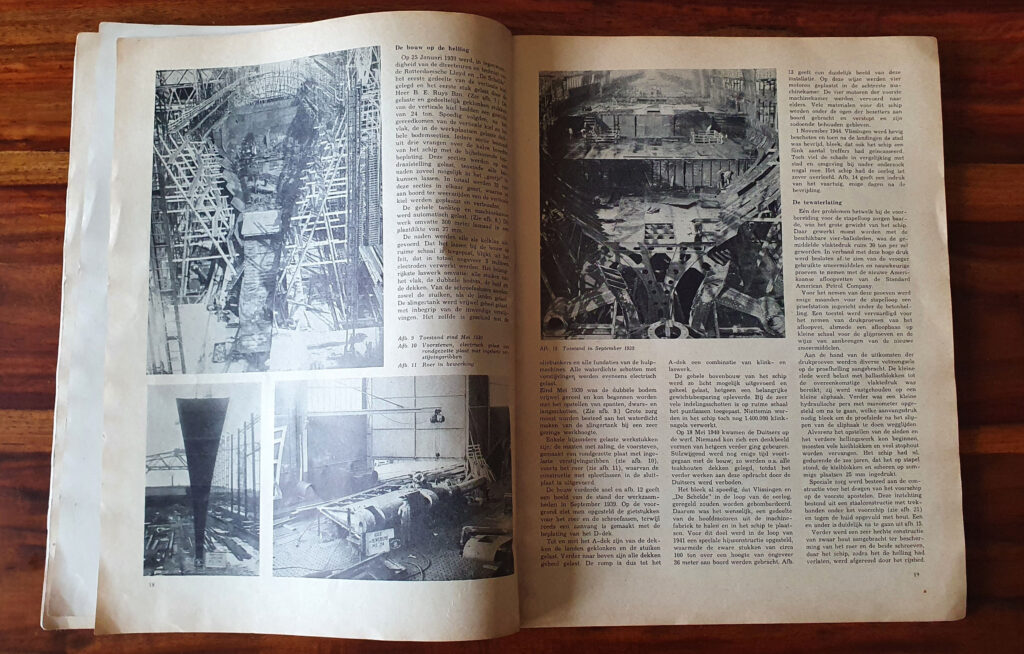
On 1 July 1946, the ship was finally launched and moored at Rotterdam’s Lloydkade for finishing works. On 2 December 1947, after seven troubled years, the Willem Ruys departed on her long-awaited maiden voyage from Rotterdam to Batavia. She headed the shipping line’s fleet for 11 years, completing 64 crossings.
Lasting Innovation
With a focus on design and luxury, the sleek-looking liner represented a new wave in the maritime industry. She only had capacity for 869 passengers (later 1,372) and 300 crew, but her distinctive superstructure fascinated with innovative low-slung aluminum lifeboats, integrated beautifully just above her hull. This detail not only made her competitors look like monuments of a bygone era, but it served as a new benchmark for safety and speed of evacuation. Even today, cruise ships adhere to this design, using fiberglass-reinforced plastic instead of aluminum.
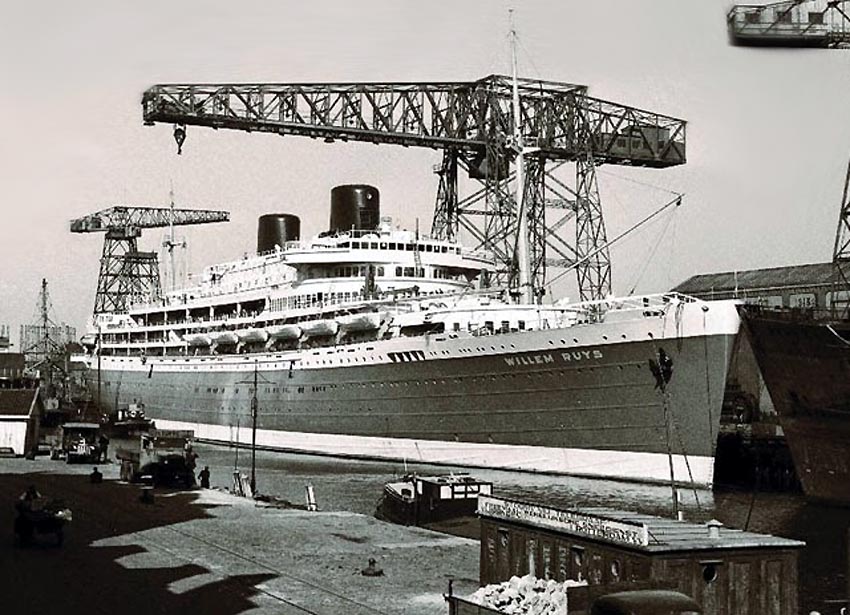
Rediscovering Grandeur
From the moment passengers set foot on the liner’s gleaming decks, they were surrounded by opulence and timeless charm. A masterpiece of design, her interiors evoked the grandeur of the Golden Age of ocean liners. A blend of Art Deco motifs, mid-century modernism, and nautical elements, all coming together harmoniously, granted passengers unparalleled luxury at sea.
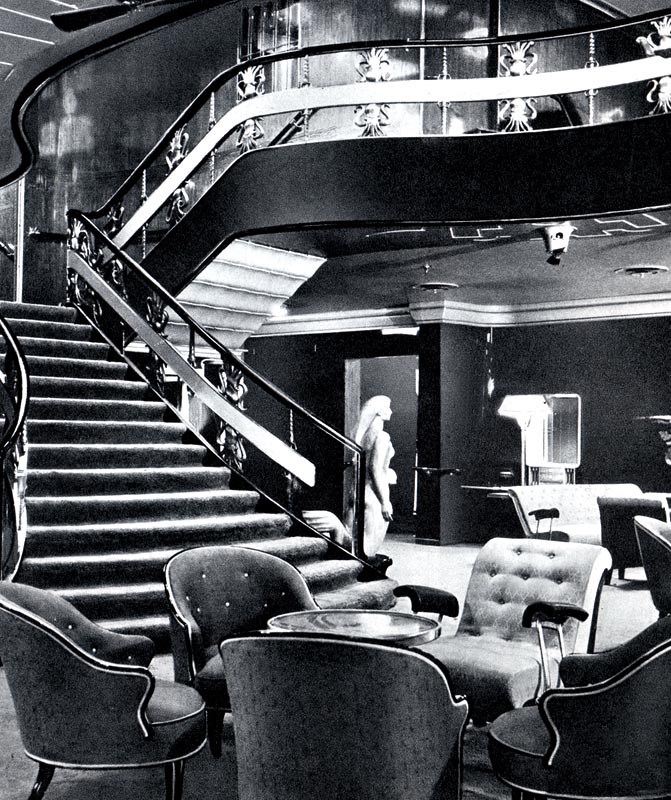
From the intricate wrought iron railings of the grand staircase to the lavish lounges, covered in sumptuous fabrics and ornate furnishings, all spaces exuded sophistication and refinement. Cabins steeped in comfort and indulgence, offering passengers a restful atmosphere at sea. To complete the experience, the dining venues served the finest cuisine from around the world under the gleam of chandeliers and polished wood-paneling.
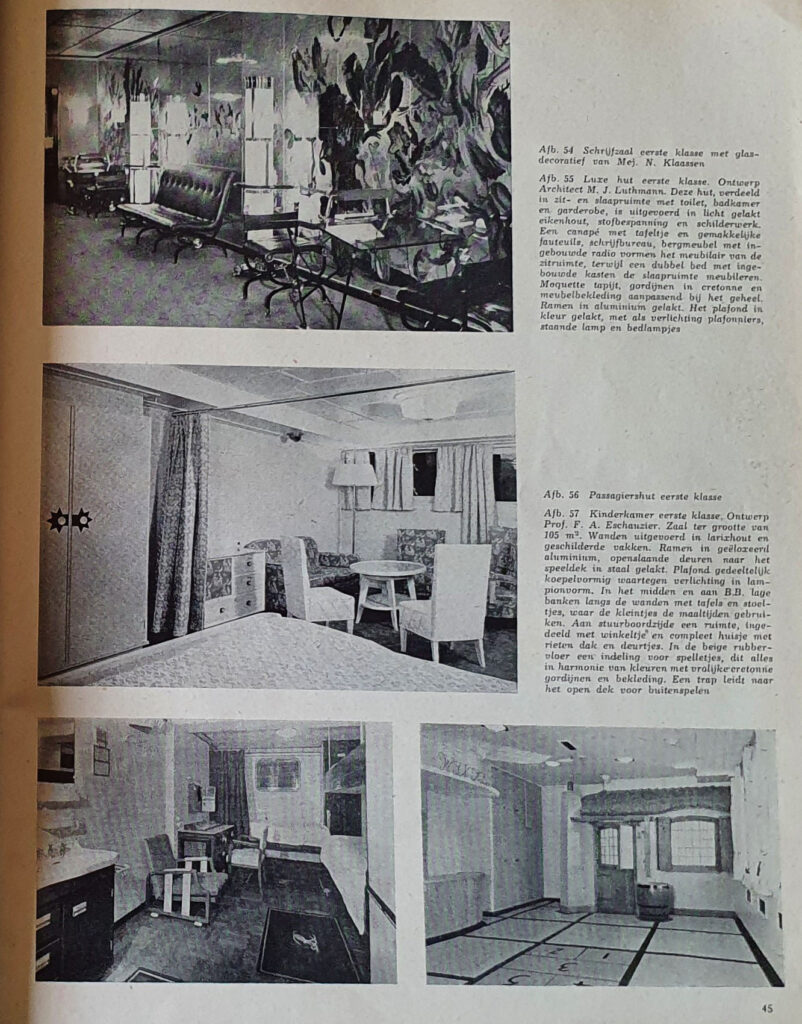
Beyond lavish interiors and world-class amenities, the ship offered various cultural and recreational activities – art exhibitions, classical concerts, cocktail parties, glamorous casino nights, and deck games, to name but a few.
Rivals Collide (Literally)
The first ill omen came on 6 January 1953. While sailing along the narrow Red Sea, the splendid Willem Ruys crashed into her rival MS Oranje. The latter was traveling in the opposite direction and followed a custom at the time for liners to salute each other at a close distance. The Oranje, however, veered to the left, powering into the other vessel’s hull. With her bow disfigured and passenger safety compromised, the pride of the Netherland Line had to cancel a scheduled stop in Colombo and proceed directly to Jakarta. Fortunately for the KRL, damage on the Willem Ruys was less extensive. After a wave of scalding public criticism, investigations confirmed miscommunication between the liners as the cause of the accident.
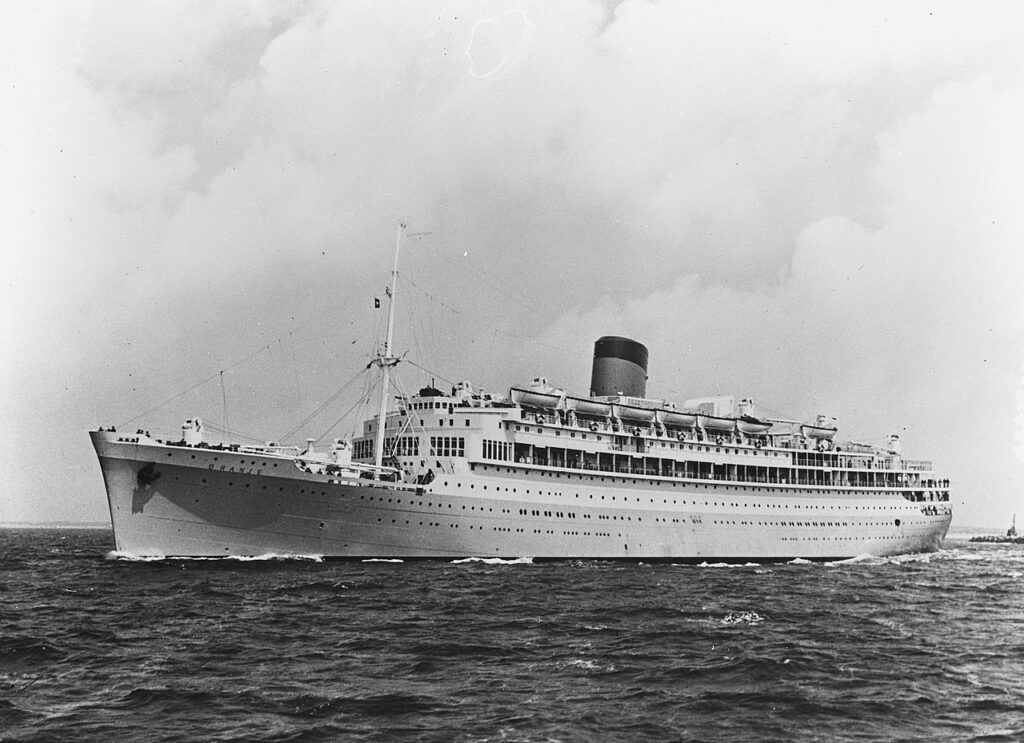
Drifting in the Doldrums
Indonesian independence cost many lives on the archipelago, souring relationships between the young nation and its former colonial overlord. The new status quo soon redrafted passenger routes, forcing rivals into unexpected alliances. In 1958, the KRL and the Netherland Line entered a partnership for a round-the-world service on board the premium liners Willem Ruys, Oranje, and Johan van Oldenbarnevelt. After only two voyages, however, the Willem Ruys embarked on a new route, transporting Dutch immigrants to Australia and New Zealand, in direct competition with British lines. By the end of 1964, demand for the route dropped, and KRL sold the vessel to the Italian Flotta Lauro to become their new flagship Achille Lauro.
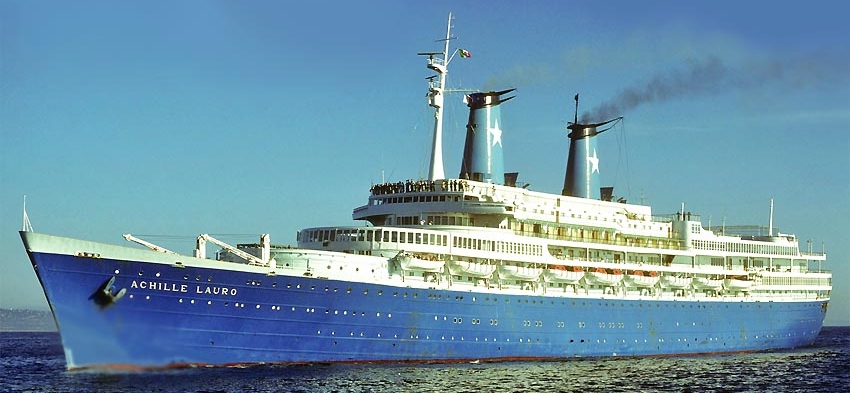
The classic liner’s new identity as a cruise ship reflected a fundamental shift in the maritime marketplace, this time triggered less by political transformation and more by technology. Many refer to the post-war decades as a golden age in passenger aviation, when the modest airliner administered a final blow to the now-obsolete ocean giants. Despite exorbitant fares at the time, a KLM flight to Jakarta on a Lockheed Constellation saved two weeks in transit time, sending many ships to the scrapyard. With a new career on the sunny Mediterranean, the Achille Lauro seemed luckier than many others. One thing about luck, though, is that it eventually runs out.
Taken
In October 1985, the Achille Lauro embarked from Genoa on what was supposed to be a leisurely voyage around the Mediterranean. The atmosphere on board was one of relaxation and enjoyment as passengers indulged in the pleasures of cruising. But as the vessel left Alexandria for Port Said, the idyllic voyage shattered to pieces when four armed members of the Palestine Liberation Front (PLF) charged at the crew and took over the ship. The hijacking later turned out to have been accidental, as the attackers had planned to assault an Israeli port upon arrival, only to be caught by a crew member while preparing smuggled firearms in their cabin.
The incident presented a diplomatic dilemma for governments around the world. The hostage crisis unfolded against the backdrop of heightened tensions in the Middle East, with Israel and the Arab states locked in a protracted conflict. With the presence of American citizens among the hostages, the United States found itself at the center of the storm. But despite efforts on all sides to defuse the crisis, the affair ended in tragedy – on 10 October 1985, the hijackers murdered Leon Klinghoffer, an elderly American passenger confined to a wheelchair. The killing sent shockwaves around the world and exposed the vulnerabilities of the maritime industry, raising questions about security protocols aboard passenger vessels.
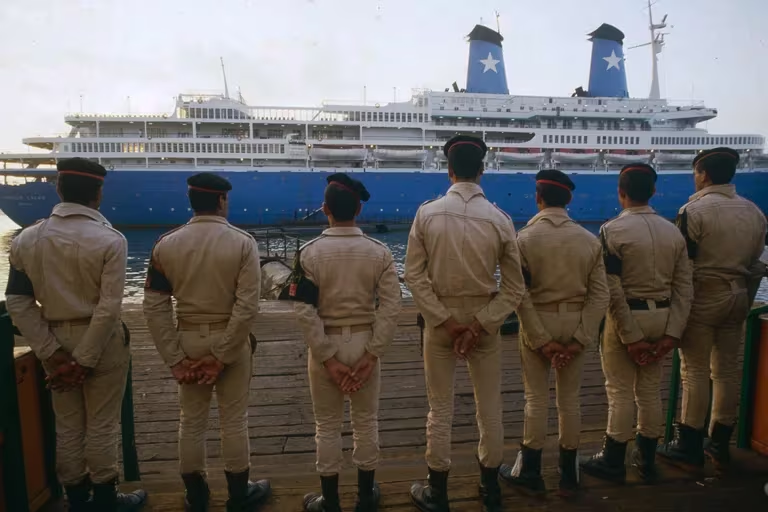
In the aftermath of the hijacking, the Achille Lauro continued to sail, albeit with a tarnished reputation. She changed ownership multiple times, undergoing various refurbishments in an attempt to break up with her troubled past.
Sinking
In November 1994, with over a thousand passengers and crew on board, the Achille Lauro embarked for South Africa. As the veteran vessel cruised past the Somali coast, a crankcase in the engine exploded, letting cooling oil leak into the exhaust. Unnoticed by the engine-room crew at first, a fire flared out to uncontrollable proportions.
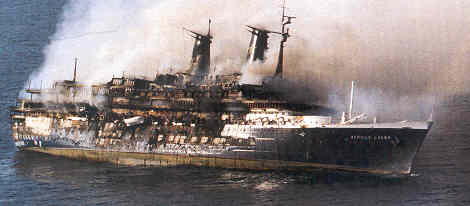
After futile attempts to extinguish the blaze (including splashing buckets of swimming-pool water over the flames), the captain ordered evacuation. The order, however, came in too late for two elderly passengers, who perished on board. A fire tugboat arrived on site the following day, only to watch the Dutch beauty surrender to her beloved Indian Ocean, ending a life of glamor and tragedy.
Keep scrolling for more photos!
The Shipyard
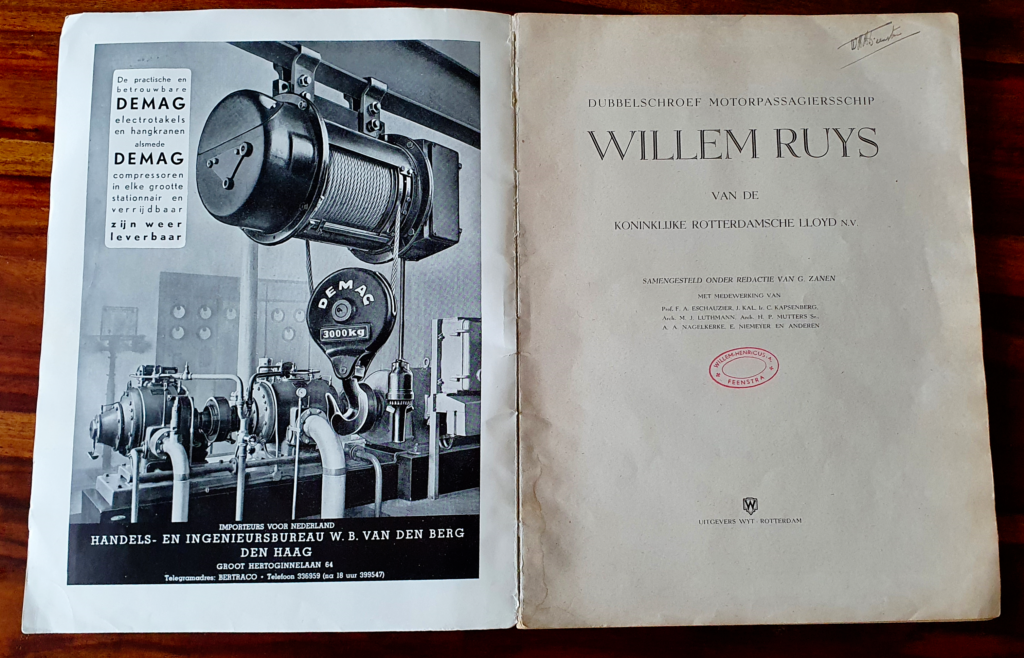
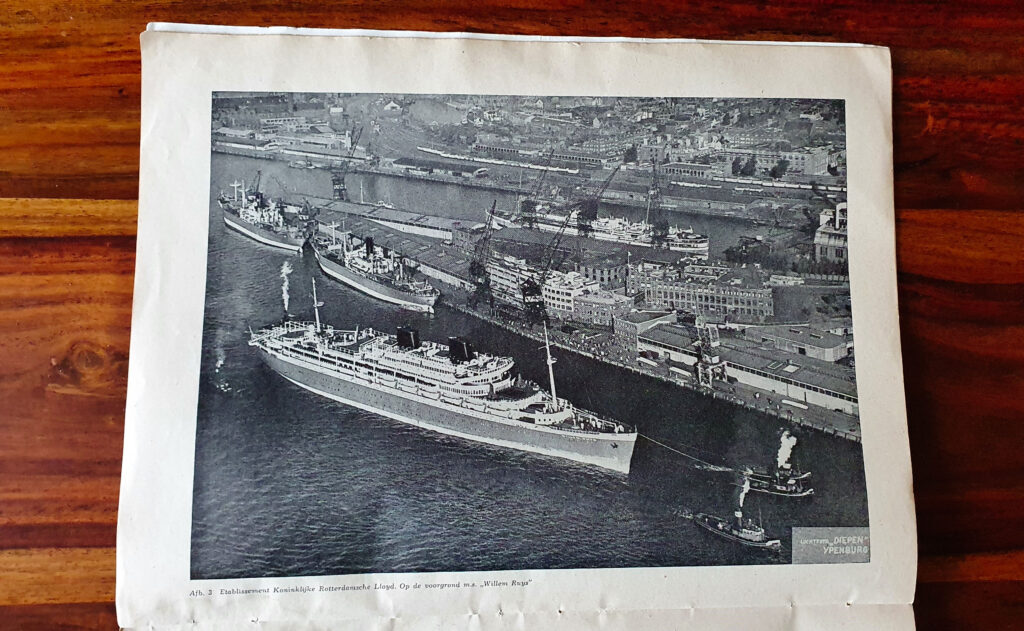

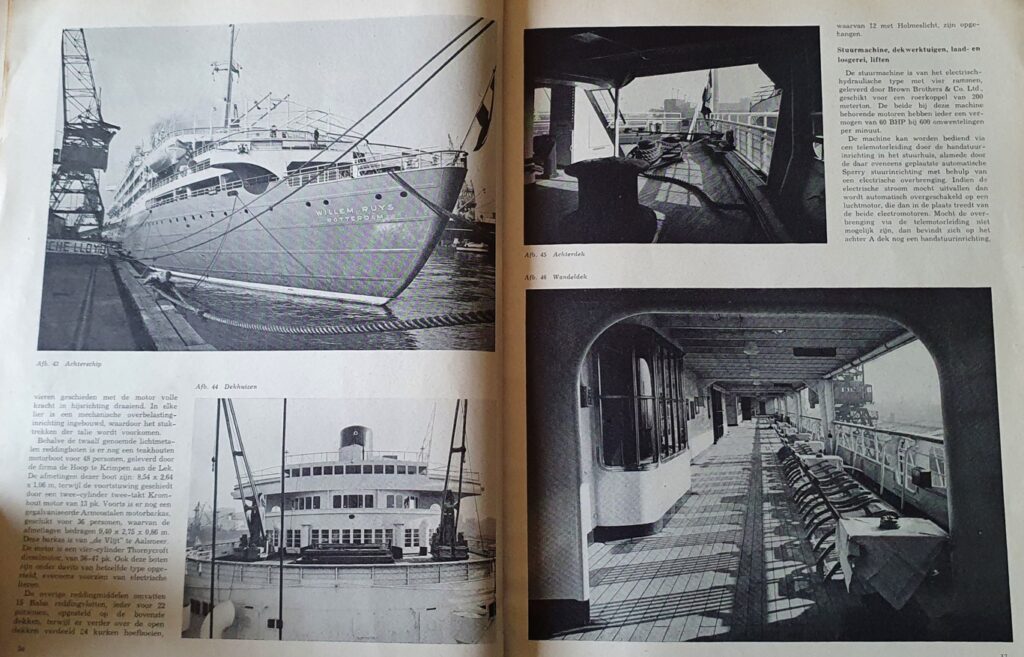
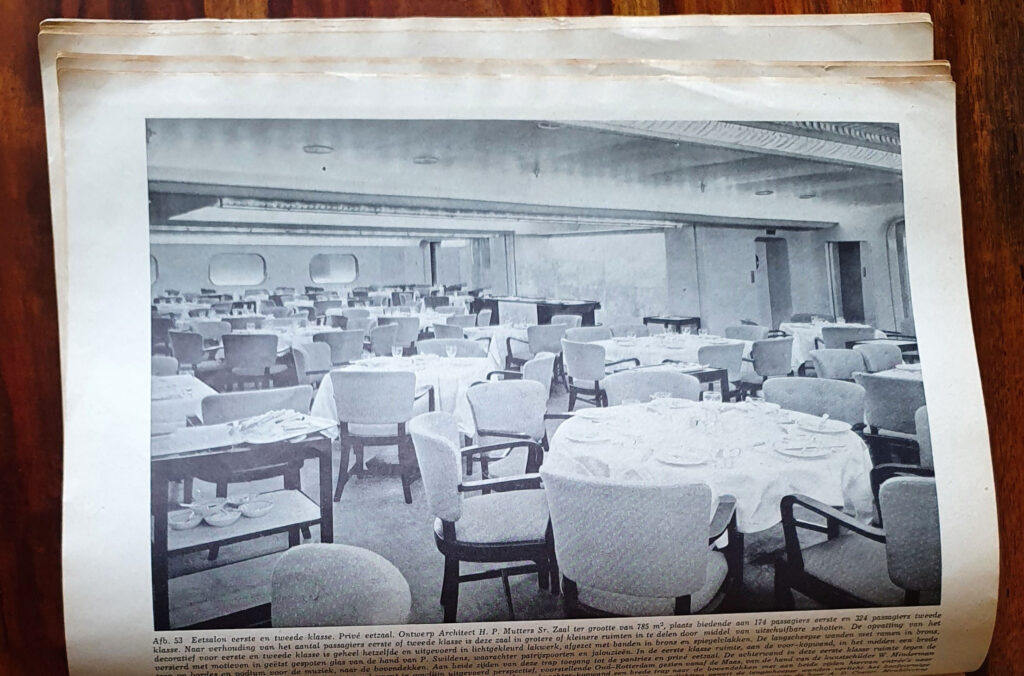
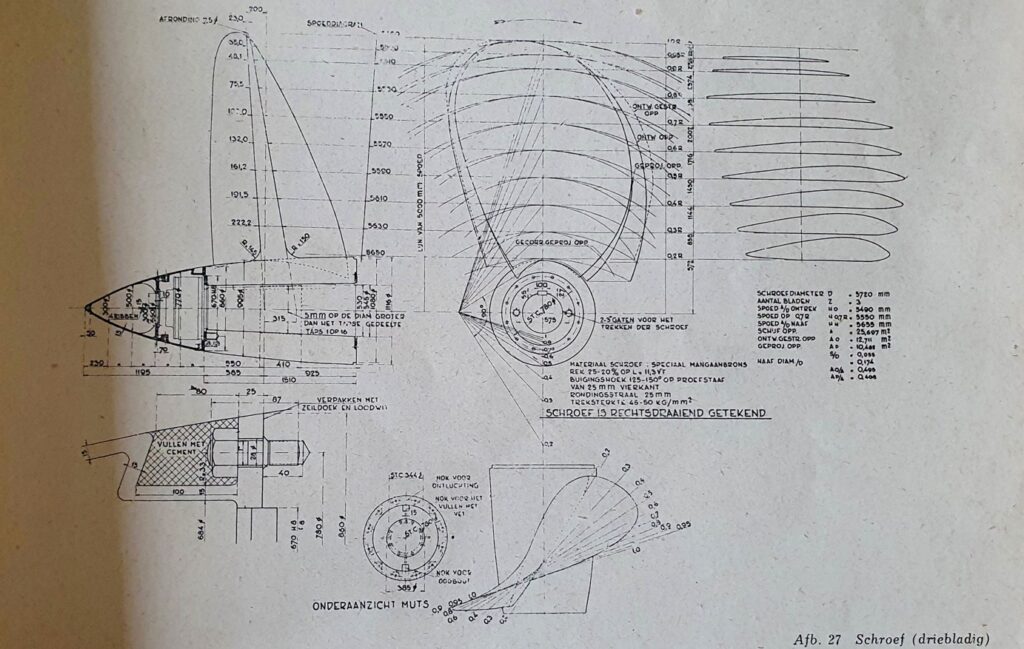

Don’t forget to visit The Shipyard Shop!
